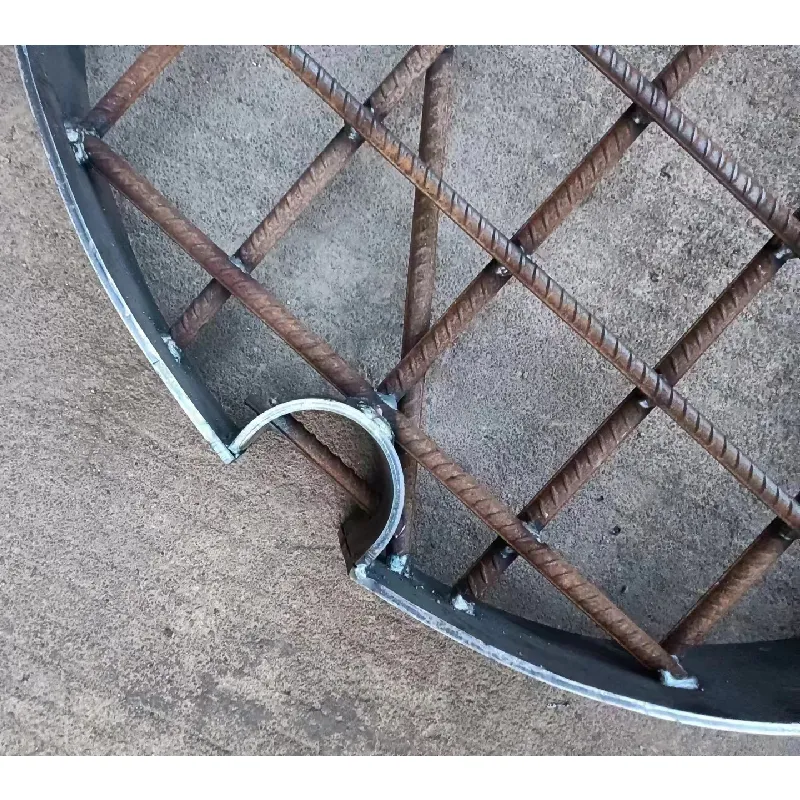rectangular gully grid
The Art and Utility of Rectangular Gully Grids
In the world of urban infrastructure, few elements play as critical a role in ensuring the efficiency and functionality of drainage systems as gully grids. Among the various designs available, the rectangular gully grid stands out for its unique attributes and benefits. This article delves into the significance, design, and applications of rectangular gully grids in contemporary urban landscapes.
Understanding Gully Grids
Gully grids are constructed openings designed to collect surface water, directing it towards underground drainage systems. They are primarily found in roads, parking lots, and other paved areas, playing a vital role in managing stormwater runoff. By preventing water accumulation on the surface, gully grids contribute to road safety and minimize the risk of flooding in urban environments.
The Rectangular Design
Rectangular gully grids differ from their circular counterparts in both aesthetics and functionality. The rectangular shape allows for greater surface area coverage and can be easily integrated into various architectural designs. This makes them particularly appealing for urban environments where space is limited, and aesthetics are a consideration.
The rectangular design also allows for more efficient water capture. The edges of the grid can be aligned with the curb and road markings, ensuring that rainwater flows directly into the grid rather than pooling on the surface. This efficiency is crucial in densely populated areas prone to heavy rainfall, where quick drainage is necessary to prevent accidents and infrastructure damage.
Material and Durability
Rectangular gully grids are typically made from materials such as cast iron, steel, or reinforced concrete. Each material has its own set of advantages; for instance, cast iron is known for its strength and durability while steel grids can offer lighter weight options. The choice of material often depends on the expected load, environmental conditions, and maintenance considerations.
rectangular gully grid

Modern rectangular gully grids are designed with longevity and resilience in mind
. Many grids incorporate features such as corrosion resistance and slip-resistant surfaces, enhancing their functionality and safety in various weather conditions. Furthermore, innovative designs often include features that prevent debris buildup, ensuring that the drainage systems function optimally.Environmental Considerations
The design and implementation of rectangular gully grids also take into account environmental sustainability. Many urban areas are shifting towards greener infrastructure, and gully grids can play a role in this movement. By incorporating permeable materials or eco-friendly designs, rectangular gully grids can facilitate water infiltration and reduce runoff, thereby improving groundwater recharge and decreasing the burden on drainage systems.
Moreover, the strategic placement of these grids can enhance urban landscape aesthetics. For instance, they can be integrated with surrounding green spaces or landscaped areas, promoting a harmonious blend between natural and built environments.
Challenges and Solutions
Despite their advantages, rectangular gully grids do face some challenges. One of the primary concerns is the risk of clogging due to debris accumulation. Regular maintenance is critical to ensuring that these grids function effectively. Implementing cleaning schedules and employing guards or screens can mitigate this issue, maintaining the grid’s efficiency and preventing water backup.
Another challenge is the potential for accidents, particularly if the grids are not designed with safety in mind. Ensuring that gully grids are flush with the pavement and using non-slip materials can enhance pedestrian and vehicular safety.
Conclusion
Rectangular gully grids are an essential component of urban drainage systems, combining functionality with aesthetic appeal. Their design caters to the specific needs of urban infrastructure, making them a preferred choice in many metropolitan areas. As cities increasingly prioritize sustainable and efficient water management solutions, the role of rectangular gully grids will undoubtedly continue to grow, offering a robust strategy for managing stormwater while contributing positively to the urban environment. With proper design, materials, and maintenance, rectangular gully grids can enhance both the safety and sustainability of urban landscapes, serving as a testament to the importance of efficient drainage in modern city planning.
-
The Smarter Choice for Pedestrian AreasNewsJun.30,2025
-
The Gold Standard in Round Drain CoversNewsJun.30,2025
-
The Gold Standard in Manhole Cover SystemsNewsJun.30,2025
-
Superior Drainage Solutions with Premium Gully GratesNewsJun.30,2025
-
Superior Drainage Solutions for Global InfrastructureNewsJun.30,2025
-
Square Manhole Solutions for Modern InfrastructureNewsJun.30,2025
-
Premium Manhole Covers for Modern InfrastructureNewsJun.30,2025
